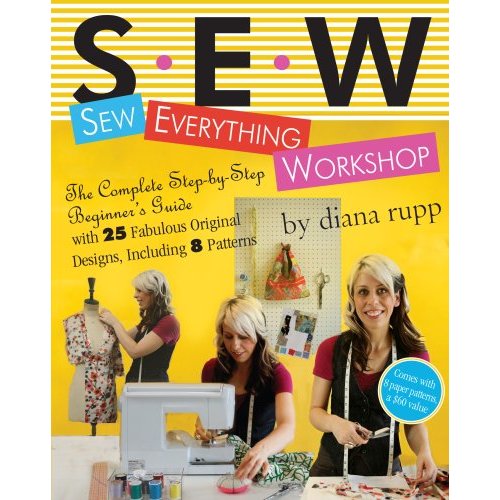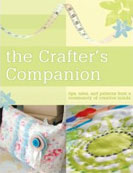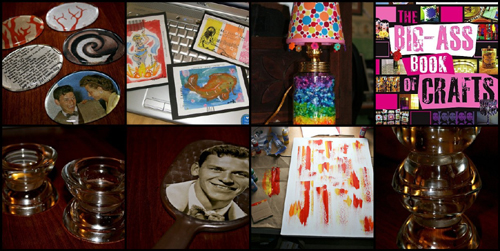
1. Glass Paper Weights, 2. Subscription Card Artwork, 3. Mason Jar Lamp, 4. Big-Ass Book of Crafts Cover, 5. Candle Holders, 6. Frankie Mirror, 7. Drag Art. Pg. 6, 8. Candle holder
Where to begin? The Big Ass Book of Crafts by Mark Montano is certainly big with 377 pages and a corresponding weight.
Organization
The projects are divided into 21 categories by type of object, in other words, desk top decorations are collected under Bored at My Desk, Let Me Entertain You discusses place mats, napkins, refrigerator magnets, and coasters, you get the picture. Each category is color-coded. I like that feature because it does help you orient yourself within this vast sea of projects, which brings me to the layout.
Layout
I experienced the layout to be somewhat in my face. A look at the cover gives you an idea of what to expect inside, namely a barrage of colors, pictures, and text. These are arranged on the page in a fashion that does have some method to its madness, but is difficult to follow when you are just casually leafing through the book. Then again, I’m sleep deprived.
I would recommend setting an hour aside, picking up your drink/snack of choice, and slowly going through the book with some post-its to bookmark your favorite projects. Minor pet peeve: Not every page has a page number; and sometimes it’s not even every other page. I need my page numbers, otherwise I get lost and bad things happen when I get lost. . .
Projects
As with any large collection of projects there are some that appeal to me more than others. For instance, I shy away from anything that involves saws or power tools, but love playing with glue and paper. Also, some of the projects may be familiar (searching Flickr for “pencil roll” renders 1390 results), but sometimes it is nice to have instructions for a project in a format other than stapled 8 1/2 X 11 pieces of paper.
Generally, the instructions were pretty clear. Whitney of sewtrashy.com can certainly attest to that because she truly tested this book. Regarding her Drag Art project (p.6) she writes:
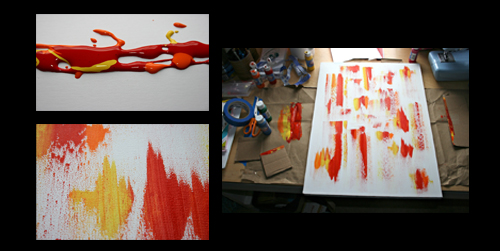
I had such a hard time picking just one project from this book. There were a lot I would still like to try, but this one stuck out for its simplicity. It seemed to have some potential. Also, it was super-duper easy! Just throw some paint down and drag your cardboard through it. Instructions were clear. I’m pleased with how mine turned out, although I will continue to push this method in the future. I don’t like painting with a brush, so this suited me quite well!
The only thing I did differently than the instructions in the book: I put my paint down on another surface and dabbed the cardboard in it BEFORE dragging it on the canvas. I wanted a little cleaner look than in the book.
Would love to see your attempts! Give it a try, super easy, and a quick result. You are bound to have the minimal supplies lying around to try this project. I did!
In addition, Whitney also made glass candle holders inspired by the three-tiered tray (p. 207), paperweights based on the glass chip magnets (p. 219) and a Frank Sinatra mirror influenced by the Japanese hand mirror (p. 230). She used whatever materials she happened to have on hand and substituted Mod Podge for some of the specified glues. You should definitely check out her detailed project descriptions in the book club Flickr pool.
I think that’s what I liked best about the book: You are encouraged to use the crafts and instructions as inspirations for very personal projects.
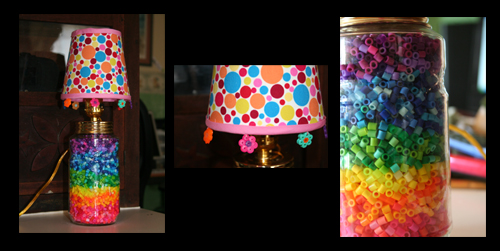
For my project I chose the marble mason jar lamp (p. 76). After perusing local hardware stores for the necessary lamp wiring equipment, I cheated and ordered an already assembled mason jar lamp kit. Then I snuck into my daughter’s room to “borrow” some marbles (“Mom, what are you doing with my marbles and where are you going with my nightlight bulb?”) and this is where I ran into trouble with my 5-minute project. You need more than 160 marbles to fill a mason jar and the lamp kit blew out the low wattage bulb. To restore the family peace, my daughter and I spent a few team-building hours sorting perler beads into rainbow colors to fill the jar and making the little flowers adorning the lampshade.
If I were to make this type of lamp again, I would add a lamp harp to the fixture that could support a slightly larger shade. In the meantime, I’m thinking of other designs like a jar filled with nuts and bolts and a classy black shade, or a jar filled with buttons and a lampshade decoupaged with old patterns.
What was your experience with the book?
Suggestions for the next book club so far are:














